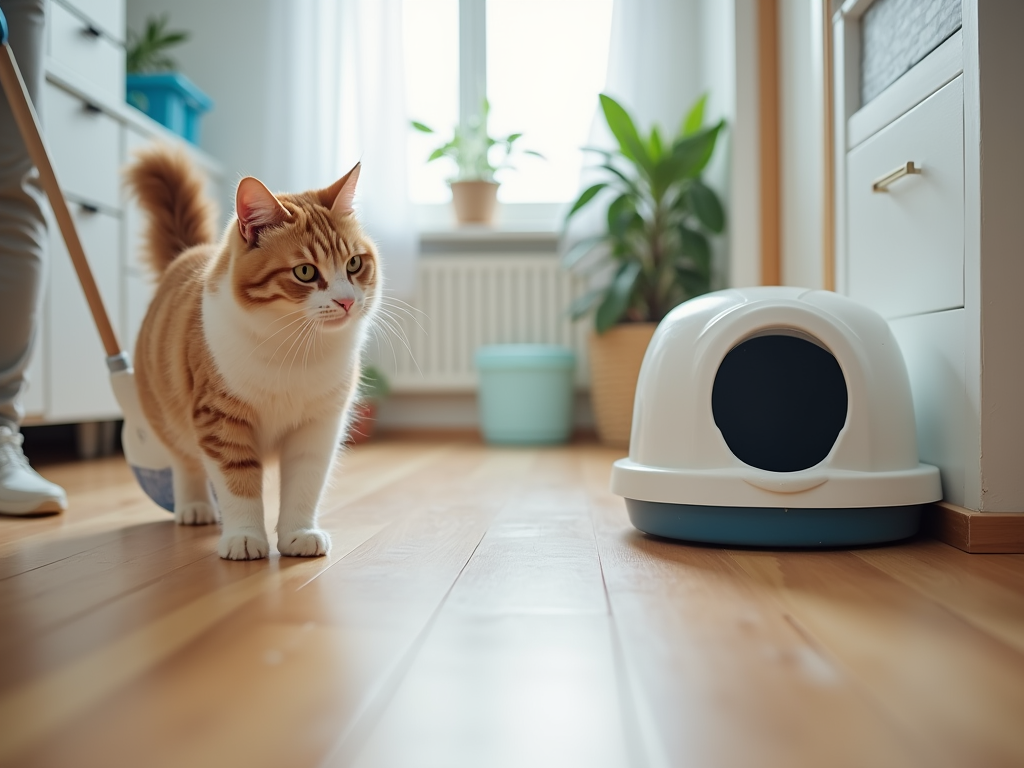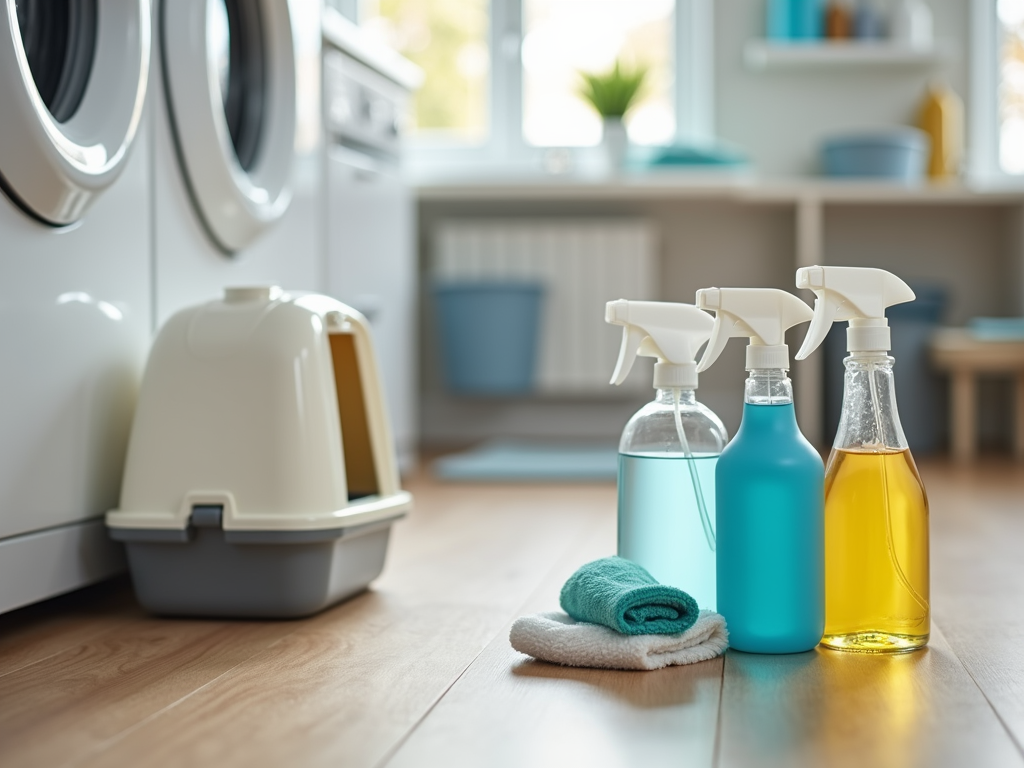Dealing with cat urine on wood floors can be a frustrating task for any pet owner. However, with the right approach and materials, you can effectively remove those unpleasant odors and stains. This article will guide you through proven methods to eliminate cat pee from your wooden floors, ensuring your space is fresh and clean once again.
Why Cat Urine is a Persistent Problem

Understanding why cat urine is particularly challenging to clean is the first step to addressing the issue. Cat urine contains specific compounds such as uric acid, which is notorious for its strong smell and tendency to linger. Unlike many other odors, cat pee doesn’t just dissipate; it can seep into the wood, making it difficult to eradicate completely. Additionally, a cat’s sense of smell is far more acute than that of a human, meaning even trace amounts of odor can prompt them to re-mark the same spot. To protect your wood floors, it’s essential to act quickly and thoroughly when addressing cat urine. Failure to do so can lead to permanent damage, unsightly stains, and an even greater headache for you as a pet owner.
Materials You Will Need

Before you begin the cleaning process, gather the necessary materials to ensure the task is efficient and effective. Here is a list of supplies that you might require:
- A clean cloth or paper towels
- White vinegar
- Baking soda
- Water
- A spray bottle
- Enzymatic cleaner specifically designed for pet urine
- Pine sol or mild soap (for added cleaning power)
These items will aid in neutralizing the odor and cleaning the stained area. White vinegar is particularly effective for deodorizing, while baking soda helps absorb the moisture and odor. Enzymatic cleaners can break down the uric acid effectively and eliminate the source of the smell, so they are a vital part of your toolkit.
Step-by-Step Cleaning Process
Now that you have your materials ready, follow these steps to effectively clean cat urine from your wood floors:
- Blot the Area: If the urine is fresh, start by blotting the area with a clean cloth or paper towel. Do not rub, as that can spread the urine. Instead, press down gently to absorb as much liquid as possible.
- Create a Vinegar Solution: Mix one part white vinegar and one part water in a spray bottle. Lightly spray the affected area, ensuring it is damp but not soaking wet. This solution helps neutralize the odor.
- Sprinkle Baking Soda: After applying the vinegar solution, immediately sprinkle baking soda over the damp area. The reaction between the vinegar and baking soda creates a fizzing action that helps lift the stain.
- Let it Sit: Allow the mixture to sit for at least 15-20 minutes. This waiting period helps the vinegar and baking soda penetrates the wood and effectively break down the urine.
- Wipe Clean: After the time has elapsed, wipe away the baking soda and vinegar mixture using a damp cloth. Make sure to remove all residue, as any leftover solution can leave a sticky mess that attracts dirt.
- Use Enzymatic Cleaner: Lastly, apply an enzymatic cleaner according to package instructions. These products target and eradicate the odor-causing bacteria, ensuring that the smell is completely eliminated.
These steps not only remove the urine but can significantly lessen any lingering odor, making your wooden floors seem fresh and clean again.
While effective cleaning methods are essential, preventing future accidents is crucial in maintaining the integrity of your wood floors. Here are some helpful tips:
- Provide a designated litter box area and ensure it’s cleaned regularly. Cats are less likely to have accidents if they feel their litter box is hygienic.
- Consider the use of odor-eliminating litter, which discourages cats from eliminating outside the box.
- If your cat shows signs of stress or anxiety, try to identify the causes and address them accordingly.
- Consult your veterinarian if urination issues escalate, as they could indicate underlying health problems.
- Introduce natural deterrents in areas where your cat may urinate inappropriately, such as citrus peels or specific cat-safe sprays.
Conclusion
Getting cat pee out of wood floors may seem daunting, but with the right techniques and preventive measures, you can maintain a clean and odor-free environment. Immediate action and the right cleaning products are key in ensuring success. By addressing the issue promptly and following these guidelines, you can help protect your wood floors while ensuring your cat feels comfortable in their space.
Frequently Asked Questions
1. What should I do if the cat urine has dried on the floor?
If the cat urine has dried, dampen the area with water or a vinegar solution to help break it down before cleaning. Follow the same steps as if it were fresh, focusing on blotting, applying baking soda, and using enzymatic cleaners afterward.
2. Can I use bleach to clean cat urine from wood floors?
It is not advisable to use bleach on wood floors, as it can damage the wood and lead to discoloration. Instead, rely on vinegar, baking soda, and enzymatic cleaners for a safe and effective cleaning method.
3. How can I tell if I’ve removed all the cat urine odor?
To check for lingering odors, you can perform a sniff test after the cleaning process is complete. If you can still detect an odor, repeating the cleaning method may be necessary, especially focusing on using enzymatic cleaners.
4. What if my cat continues to urinate in the same spot?
If your cat repeatedly uses the same spot, ensure that the area is thoroughly cleaned and deodorized to remove any residual scent. Additionally, consider behavioral factors, such as stress; consult a veterinarian or animal behaviorist for more tailored advice.
5. Is it safe to use commercial cleaners around pets?
Always check the labels on commercial cleaners to ensure they are labeled as pet-safe. Many enzymatic cleaners are specifically designed for pet owners and are safe to use around animals when used as directed.